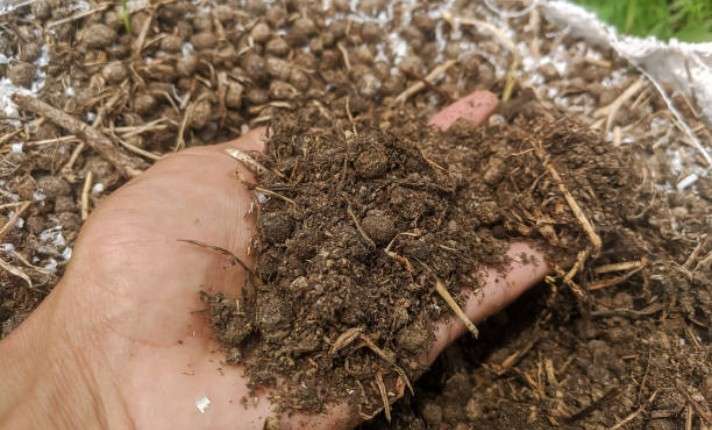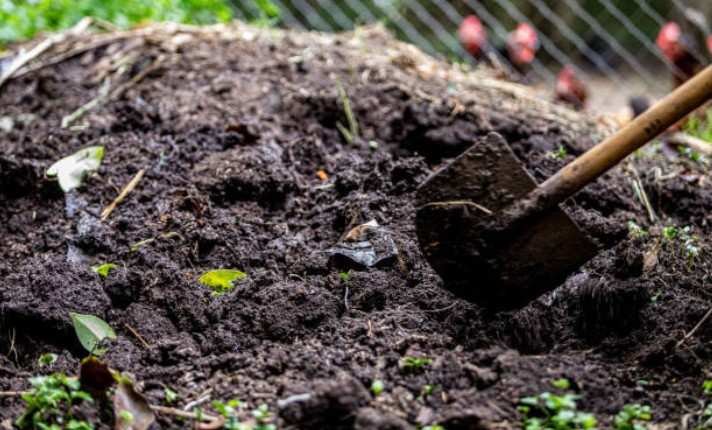Are you looking to improve your vegetable garden? Adding manure is a great way to boost soil health and promote plant growth. It provides essential nutrients that your plants need.
Manure helps improve soil by adding organic matter, which enhances its structure. This allows for better water-holding and nutrient retention. Mixing manure into your garden beds encourages root growth and supports healthy plants.
When choosing manure, opt for organic manure for its rich nutrient content. It boosts mineral levels and supports plant health without causing harm. Apply it evenly across your vegetable patches, and mix it well into the soil.
By adding manure, the soil becomes more porous, improving water flow and root development. This also helps maintain the right balance of minerals for optimal plant health.
Table of Contents
ToggleWhat is Manure?
Manure is made from animal faeces mixed with things like straw, wood shavings, or old bedding. When it is well-rotted or composted, it becomes a good organic fertilizer for the soil.
It gives nutrients to vegetables, helping roots grow strong. But fresh manure can carry pathogens like E. coli 0157:H7, Listeria, and Salmonella.
These bacteria, along with parasites like tapeworms and roundworms, can cause foodborne diseases. That’s why it’s safer to use rotted manure and avoid direct contact with edible crops.
As someone who is conscious of microbial contamination, I always let the manure cooling period finish before application. This helps protect the garden, food, and public safety.

Which Manure Works Best for Your Vegetables?
Here’s a clear guide to help you pick the right manure for your vegetable garden. Each type has different nutrients, effects on soil, and safety concerns. Use this table to choose what fits your garden’s needs best.
| Manure Source | Best Used For | Special Notes | Soil Type Match | Needs Composting |
| Cow | General vegetable beds | Often from farmyard sources; can be mixed with bedding | Good for sandy soils | Yes – minimum 6 months |
| Horse | Improving soil structure | May contain hay; check for weedkiller contamination | Useful on sticky soils | Yes |
| Chicken | Boosting nitrogen levels | Very strong; best in pelleted or granular form to avoid root scorch | Works on tired or depleted soil | Yes |
| Rabbit/Guinea Pig | Mixing with light bedding for small beds | From herbivorous pets, clean and easy to compost | All-purpose | Optional |
| Sheep/Alpaca/Llama | Fast decomposing dung for raised beds | Soft, low-odor, high in nutrient content | Good for light soil blends | Yes |
| Pig | Larger spaces with strong composting setup | Often from intensive farming; check for residue or medication | Heavy or neutral soils | Yes – thoroughly |
| Cat/Dog | Not recommended | Can carry parasites, flea, or worming treatments harmful to food crops | None – do not use | Not suitable |
Read more:
How to Use Mulch in a Container Garden
How to Layer Soil for Container Gardening
How to Avoid Weeds in Vegetable Garden
When to Add Manure to Your Garden
Add manure in autumn or winter when the soil is bare and not too wet. This allows nutrients to mix in before sowing in spring.
Avoid applying fresh manure right before planting. It may carry E.coli, salmonella, and other bacteria that can be harmful to your plants.
If your garden is already planted, wait until the crop is established. Then, gradually spread aged or composting manure on the surface.
Rain or digging can help blend it in and lower leaching. This application method also supports better drainage and keeps organisms like worms active.
As a general guideline, apply it at least 90 days before harvesting for protection. That’s a safe rule of thumb to reduce risk from animals’ waste.
Check the specification on the manure type and choose the right option based on your landscape and flower or vegetable beds.
How to Apply Manure to Your Vegetable Garden
First, clear the soil so the surface is bare. Then, gently spread a layer of manure, about 5–8 cm thick. Be careful not to let it contact the stem of any plant, as that can lead to rotting. I always break up large lumps before laying it down.
When working with large amounts, I find a flat-headed shovel and a fork very helpful to move and spread the manure evenly.
For small tasks or when using bagged, composted manure, I rely on a standard digging fork, which is usually sufficient for my garden needs.
I once read a science article by Amy Bogaard, an archaeobotanist at Oxford, published by the Institute of Agriculture and Natural Resources.
Her research showed that people observed the benefits of this technique thousands of years ago. That history and her reported insight changed how I look at natural methods in my own projects.
This ancient method is still common today. It’s a natural way to support growth in your vegetable garden using basic tools and a thoughtful process.
How to Compost Manure for Your Garden
Start by creating a compost pile in an area that drains well. The pile size should be large enough to maintain the proper temperature for active composting. Layer manure, straw, and leaves to balance nitrogen and carbon.
Turn the pile regularly to keep the microorganisms active. The moisture level should be consistent, neither too wet nor too dry.
A compost temperature between 130°F and 160°F is best for active composting. As the pile cools, it enters the curing period, where it turns into rich, dark humus.
During the composting period, check the pile’s temperature and moisture. Pile maintenance is necessary to keep the process on track.
When ready, the manure becomes finished compost that you can spread in your garden to improve soil health.

Avoid These Manure Mistakes in Your Garden
Using manure in your vegetable garden can help improve soil health and provide plants with essential nutrients. However, if not used properly, it can cause damage.
It’s important to avoid common mistakes that could harm your plants and garden. Below are some tips on what to watch out for when using manure.
| Mistake | How to Avoid It |
| Over-Application of Manure | Apply in moderation and mix it well into soil. |
| Using Fresh Manure in Your Garden | Compost it before applying to your garden. |
| Manure Contamination | Store manure properly to prevent leaks. |
FAQ’s
Q: Which Vegetables Don’t Like Manure?
A: Carrots, parsnips, and other root vegetables don’t like manured soil. The too-rich nutrients can cause the roots to fork and grow poorly. These plants prefer low-nutrient, free-draining soil.
Q: What Is the Best Time to Apply Manure?
A: The best time to apply manure is during autumn or winter, about three months prior to planting. This allows the manure to break down and release nutrients before the plants start their full growth in the spring.
If you apply it too late, the nutrients may not be available when your plants need them the most.
Q: What Is the Best Way to Apply Manure?
A: The best time to add manure is during autumn or early spring. Spread it evenly over the bare soil and gently mix it into the surface. This allows the nutrients to gradually release into the soil.
It’s important not to apply it too thick, as it can harm the plants. Be patient, as the manure will take some time to work its magic.
Q: Why Is Manure Not as Good as Fertilizer?
A: Manure is less predictable than chemical fertilizers. Fertilizers provide specific nutrient levels, like nitrogen and phosphorus, that plants need. Manure can vary in nutrient content and may not match the exact nutrient needs of your crops.
Q: What Manure Is Best for a Garden?
A: Cow manure is often the best choice for vegetable gardens. It is easily accessible, well-balanced, and easily compostable. Chicken manure is richer in nutrients but should be composted carefully to avoid harming plants.
Q: How Much Manure to Put In a Vegetable Garden?
A: University specialists recommend adding 50 to 200 pounds of manure per 1000 square feet. For horse manure, use 150 pounds, and for cattle manure, 200 pounds per 1000 square feet.
Be sure to adjust the amount based on your soil’s needs and the type of manure.
Conclusion
Adding manure to your home vegetable garden improves soil structure and boosts organic matter. Choosing cow, goat, or poultry manure and using proper composting methods helps provide plants with needed nutrients.
Hot composting and cold composting both create healthier soil over time. Correct manure management and following guidelines keep your garden soil safe and effective for growing a variety of plants.
Start applying manure today and watch your garden grow stronger and healthier!

